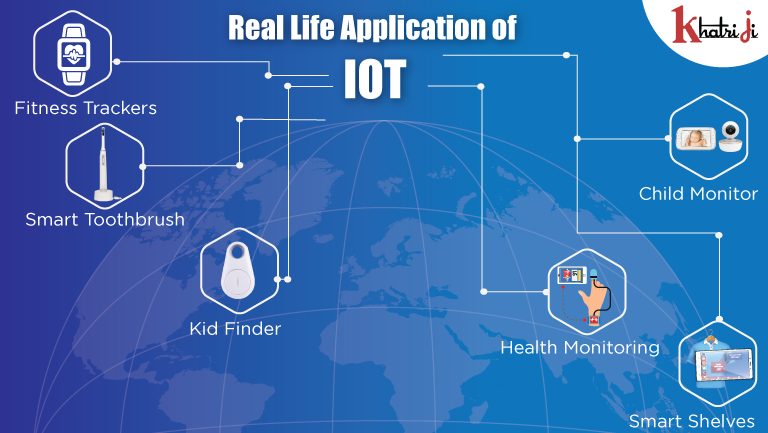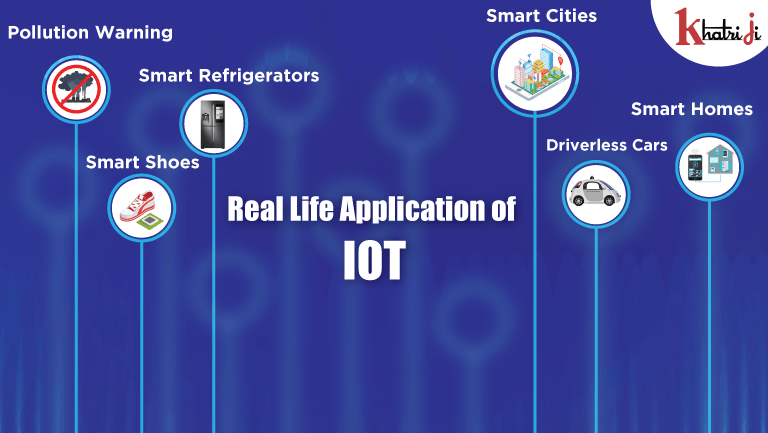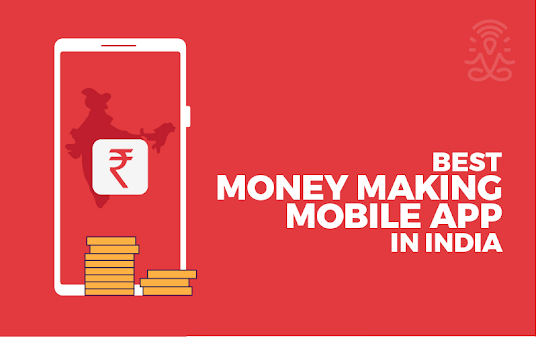The Internet of Things Is Far Bigger Than Anyone Realizes
The Internet of Things (IoT) is not a new term anymore; all of you are much familiar with it. Perhaps you have come across its application at work or read about it somewhere. Even though most of us have heard about IoT, let’s just have a brief about it.
What is Internet of Things(IoT)?
Internet of Things is a network of various physical devices that are connected with software, sensors to collect and exchange data. To put it simply, IoT is a platform where devices are connected through the internet; these devices collect and exchange data with one another. With the collection of these relevant data, IoT can converse and learn from one device to another, just like human beings.
Anything related to IoT means turning it into a ‘smart’ object. IoT enables them to transmit data and convert the work into an automated one, without the need for manual intervention. Think of the time, when everything in your surrounding like your home, car, city and other daily needs are all connected with IoT based machines. IoT can create the world and it is still getting bigger and better. IoT based devices will bridge the gap between the physical and digital equipment together with that of society and industry, also not to forget the humans in the world.
The Internet of Things (IoT) explained: In a Simple and Non-Technical Way
How do you read this message now? It could be on a desktop computer, on a mobile device, maybe on a tablet, but whatever device you're using is definitely connected to the internet.
An internet connection is a great thing, it gives us all kinds of benefits that were not possible before. If you're old enough, think about your cell phone before it was a smartphone. You can, of course, call and text, but now you can read any book, watch any movie, or listen to any song, all in the palm of your hand. And those are just a few of the great things your smartphone can do.
Connecting things to the internet has many great benefits. We've all seen these benefits with our smartphones, laptops and tablets, but this is also true of everything else. And yes, I mean everything.
The internet of things is actually quite a simple concept, it means taking all the things in the world and connecting them to the internet.
I think the confusion does not arise because the concept is so narrow and strictly defined, but rather because it is so broad and loosely defined. It can be difficult to nail the concept in your head when there are so many examples and possibilities in IoT.
To clarify, I think it's important to understand the benefits of connecting things to the internet. Why would we want to connect everything to the internet?
Why is IoT Important?
If something is connected to the internet, it means it can send or receive information, or both. This ability to send and / or receive information makes things smart, and smart is good.
Let's use smartphones as an example again. At the moment you can listen to almost any song in the world, but that's not because all the songs in the world are stored on your phone. This is because all the numbers in the world are stored elsewhere, but your phone can send information (ask for that number) and then receive information (send that number on your phone).
To be smart, something doesn't have to have super storage or supercomputer. All you need to do is connect to a super storage or a super computer. Being connected is great.
In the Internet of Things, all things that connect to the Internet can be classified into three categories:
Things that collect and then transmit information.
Things that receive information and then act on it.
Things that do both.
And all three have tremendous benefits that feed each other.
1. Collection and transmission of information
These are sensors. The sensors can be temperature sensors, motion sensors, humidity sensors, air quality sensors, light sensors, whatever. These sensors, along with a connection, allow us to automatically collect information from the environment that allows us to make smarter decisions.
On the farm, automatic soil moisture information can tell farmers exactly when to water their crops. Rather than over-watering (which can be expensive, overuse of irrigation systems and environmental waste) or under-watering (which could mean costly crop loss), the farmer can make sure that the crops are watered just the right amount. More money for farmers and more food for the world!
Just as our seeing, hearing, smelling, feeling and tasting enable humans to understand the world, sensors enable machines to understand the world.
2. Receive information and act on it
We are all familiar with machines that gather information and then act. Your printer receives a document and prints it. Your car will receive a signal from your car keys and the doors will open. The examples are endless.
Whether it's as simple as sending the "enable" command or as complex as sending a 3D model to a 3D printer, we know we can tell machines what to do from afar. And that?
The real power of the Internet of Things comes when things can do both. Things that collect and transmit information, but also receive and act on information.
3. Do both
Let's quickly return to the example of agriculture. The sensors can collect soil moisture information to tell the farmer how much to water crops, but the farmer doesn't really need that. Instead, the sprinkler system can turn on automatically as needed, based on the amount of moisture in the soil.
You can also go one step further. If the irrigation system receives information about the weather through your internet connection, it can also know when it will rain and decide not to water the crops today because the rain will water them anyway.
And it doesn't stop there! All this information about soil moisture, how much the irrigation system is watering the crops, and how well the crops are actually growing, can be collected and sent to supercomputers that run amazing algorithms that can understand all of this information.
And that's just one type of sensor. Add other sensors such as light, air quality and temperature and these algorithms can learn a lot more. With tens, hundreds, thousands of farms collecting this information, these algorithms can create incredible information about how crops can grow better, thus feeding the growing world population.
Some of the real-life application of IoT in today’s world
Needless to say, a buzz around IoT is massive. This disruptive innovation is infiltrating into different enterprises, growing new real-life applications of IoT and associating each web empowered device around us. As per study, it is found that IoT would cover 31 billion connected gadgets by 2020 and by 2025—more than 75 IoT devices billion will be connected to the web.
Yet, among the mad rush of ‘newer’ and ‘better’ IoT applications, some radiate through more than the rest.
Here are few of the IoT applications that blew our mind and some will do so in the near future.
- Smart Toothbrush
A smart toothbrush has high-quality sensors on its head that can capture the data related to your brushing frequency. The brush would send information on your missed spots, the pressure applied and much more by tracking all the crucial information on your smart phone and would also provide information to improve your oral health.
- Fitness Trackers
Fitness Tracker is one of the best devices for all fitness freaks. This device would track all your daily activities ranging from a sleeping pattern, heart rate, workout timings, calories burnt and much more. This indeed will allow you to monitor and schedule your fitness plans.
- Kid Finder
The feeling of losing your loved ones itself gives goosebumps right!!! But with the IoT-connected device ranging from the smartwatch, alarm to GPS tracker attached to your smartphone; would help you track your child’s location in real-time. This would help you stay at peace when away from your kids.
- Child Monitor
One more IoT enabled device for all the parents out here!!! You can monitor your toddler’s activities with your smartphone from anywhere across the globe. This equipment would provide you with information about your infant’s respiration data, body temperature, sleeping positions and some more.
- Smart Shelves
These gadgets are being widely used in retail industries since its inceptions. With sensors or the cameras instilled on the shelf, the retailers can get updates on product details, helping them replenish when required along with alerts of the misplaced products on their smart connected devices.
- Health Monitoring
Regular check-up of our kid or parents has become the necessity nowadays. Sudden change in body temperature, heartbeat, breathing, oxygen level, blood pressure etc. can be notified through these gadgets, helping you to take wise actions if needed.
- Smart Refrigerators
How smart can it be to peep inside your fridge without even opening it!!! Well, this is not a fiction now!!! The sensor and camera on the refrigerator allow you to keep the track of spoiled or leftover food without opening its door.
- Smart Shoes
The smart shoe would allow the user to change its colour with a tap on their smartphones. The user can send a text message, call a cab, or can also monitor the footsteps, wearing these shoes on.
- Pollution Warning
These are the smart air monitors that can detect the pollutants emitted from the vehicles in a particular area. Such updates can help the government bodies take necessary steps.
We talked about the recent development of IoT in today’s world above and how that can change the future. But some IoT applications are currently being worked upon for better performance, they are:
- Driverless Cars
One of the most futuristic uses of IoT is the driverless automatic car that can take you to the destination on their own. Such cars are equipped with sensors; internet that can sense traffic, corners, speed breakers, everything that a human can sense. Some of the companies working on such cars are Tesla, BMW, Volvo, Google and Uber. The days are not too far when we can see such cars hitting the market.
- Smart Homes
This is one of the best examples of IoT that can provide you comfort as per your needs. Imagine turning on your AC while you are on your way back home from the office; just to get the perfect temperature when you reach home. Or, think of the day, when you can record your favourite show from anywhere although you are not at home so that you can watch it later. Well, Philips has come up with smart illumination software , with which you can set the colour of your room lighting and create an ambience as per your moods.
- Smart Cities
Smart cities mean a blend of genuine utilization of IoT in today’s world. This may incorporate smart parking, smart lighting, smart home automation, smart retail and so on in the city. Indian Prime Minister Narendra Modi has taken up an initiative to make 100 smart cities in India. This means the execution of a citizen-friendly city and to make it more sustainable.
Honestly, IoT has indeed made its presence everywhere and we are enjoying its applications; something that we never thought of, some years back. IoT whole together means better future in a much easier way.
Doesn’t it sound more interesting and exciting???
Originally Article Published At : The Internet of Things(IoT) in Today’s World








Comments
Post a Comment